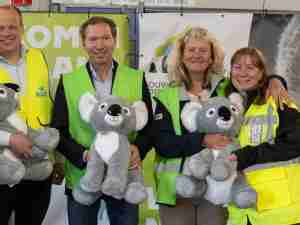Boeing Co.’s hunt for the source of manufacturing flaws with its 787 Dreamliner extends deep into its supply chain, a sign the planemaker risks further delays as it works to resolve issues that have halted deliveries of the jetliner since October.
Spirit AeroSystems Holdings Inc., which makes the Dreamliner’s nose and cockpit, is at Boeing’s request conducting an engineering analysis of so-called “noncomformities” on its portion of the carbon-fiber frame, Spirit Chief Executive Officer Tom Gentile told analysts Tuesday.
Gentile spoke less than a day after a key 787 buyer, Air Lease Corp., cautioned that production issues “seem to have mushroomed” for the twin-aisle jet. “There’s just greater and greater levels of inspections going on,” John Plueger, CEO of the Los Angeles-based aircraft lessor, said on an earnings call Monday. “As yet today, it’s difficult to see a definitive fix that is agreeable by the aviation authorities and all going forward.”
The threat of worsening delays adds to the pressure on Boeing as executives try to forge a turnaround after one of the toughest years in the company’s century-long history. The Chicago-based planemaker’s path to generating cash over the next two years, after burning through $20 billion last year, depends on its ability to unwind more than 500 jets—mainly Dreamliners and 737 Max—that have stacked up in inventory.
Dave Calhoun, Boeing’s CEO, said last month that the company aimed to resume Dreamliner shipments during the first quarter with “most likely very few, if any in February” and clear most of the jets in inventory this year. A spokesman declined to offer further comments beyond the CEO’s remarks.
Delayed Deliveries
Boeing already had 80 Dreamliners stashed around its factories and in a desert storage yard at the start of the year. To meet Calhoun’s annual goal, the manufacturer would need to deliver around 130 of the aircraft into a depressed market for long-range jets, assuming production stays at planned rates, Seth Seifman, analyst with J.P. Morgan, wrote in a report earlier this month.
“The problem, of course, is that long-range international travel has barely budged off the bottom and should take longest to recover,” Seifman said. “This adds risk to Boeing’s delivery plans” and 2021 free cash flow.
Some of the wide-body jets due to be delivered to Air Lease have been delayed more than 12 months, giving the company and its customers the right to bolt from their original contracts, Plueger said.
“It’s still an unfolding story,” Plueger said. “I wish I could say definitively that there’s an end to it.”
Search for Clues
After it shifts Seattle-area Dreamliner production to South Carolina next month, Boeing plans to use the freed-up space to inspect and repair tiny imperfections that have cropped up on the interior lining of the jets’ carbon-fiber airframes. The process, which can take weeks, involves ripping up a jet’s cabin to search for flaws about the wide of a human hair.
Boeing asked Wichita, Kansas-based Spirit to dig deeper into the issues on the portion of the 787 it manufactures, with the engineering analysis based on the planemaker’s investigation into other portions of the jet, Gentile said during an earnings call Tuesday. The company has also done “rework” in some instances “so that they can resume their deliveries sooner,” he said of Boeing.
From its engineering studies, Spirit expects to learn whether the area with surface roughness is acceptable as is or will require repairs. And based on what it discovers, the aerostructures manufacturer may need to change Dreamliner production processes, Gentile said.
“We’re learning a lot from this engineering analysis in terms of things like tools and processes,” Gentile said. “And we will make any improvements that we think are necessary as a result of that analysis going forward.”










